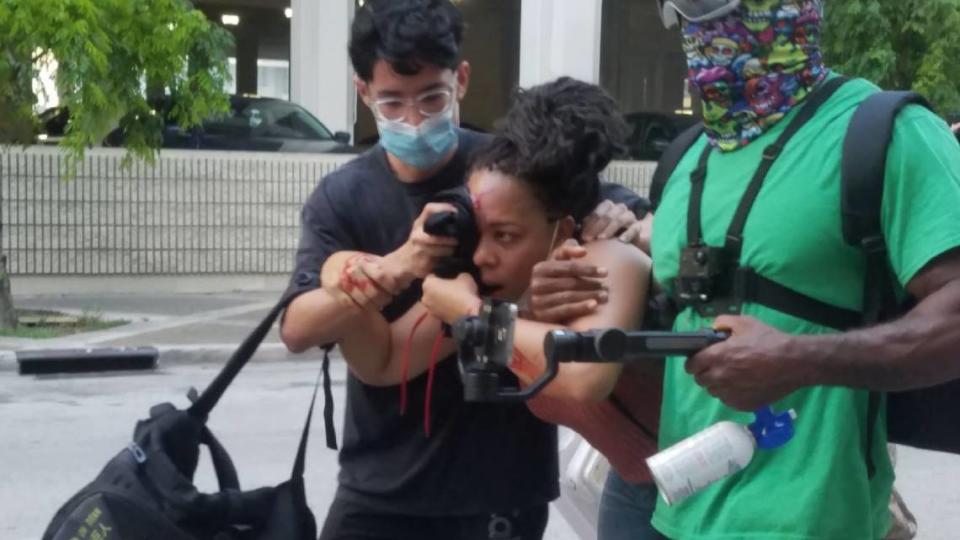Woman shot in face with Fort Lauderdale police rubber bullet makes her case for reform
LaToya Ratlieff has spent her summer recovering from a rubber bullet that smashed into her eye socket, fired by a Fort Lauderdale police officer at a Black Lives Matter protest. She sat down with Mayor Dean Trantalis and City Manager Chris Lagerbloom on Monday to discuss one thing: reforming the police department.
Ratlieff’s plan includes banning the use of rubber bullets against protesters, creating a civilian panel for investigating misconduct and establishing mandatory yearly training to address implicit biases.
“It was overall a productive meeting and they were pretty receptive,” Ratlieff said.
Though the city made no commitment to any of her plans, it agreed to have future discussions about police reforms.
“As long as the city is willing to sit down and speak with me, I’m willing to speak with them,” Ratlieff said.

The purpose of the meeting was not to review what had happened to her, but to address systemic issues like excessive use of force and make sure that no one else would experience what she did, she said.
Since shooting Ratlieff with a rubber bullet, Officer Eliezer Ramos has remained on active duty and a preliminary review of his actions at the protest found that he made “no apparent violation of department policy,” according to a summary of the police department’s investigation reviewed by the Herald.
The department’s policies do state, however, that officers “should not aim at the head, throat, face, or groin area of a suspect,” when using rubber bullets, as previously reported by the Herald.
The investigation was initiated during the tenure of Rick Maglione, who was chief at the time of the protest. He has since been reassigned.
Asked to explain why Ramos’ actions did not violate department policies, Assistant Chief Frank Sousa said that in the time since the Herald was sent a summary of the department’s investigation of Ramos’ use of force at the protest, acting chief Karen Dietrich has recalled the investigation for further review.
It is still “open and active,” he said.
As for when a new conclusion will be made, Sousa could not say. He said the department’s internal investigations have been indefinitely on hold since March 9 as is authorized under the governor’s emergency emergency declaration, which allows certain procedures to be suspended during the pandemic.
The Black Lives Matter protest was peaceful until a Fort Lauderdale officer shoved a kneeling protester, prompting a shower of water bottles in response.
With tempers inflamed, police began firing tear gas and rubber bullets into the crowd. Video of the scene shows that Ratlieff, choking on tear gas, was trying to leave the area when she was struck.
The officer who did the shoving, Steven Pomerance, has been charged with a misdemeanor count of battery.
Meanwhile, Ratlieff still suffers from anxiety, light sensitivity and an inability to focus her eyes for long periods of time — all lingering effects of the incident.

